Art Beat: Artist William Kennedy's road from a childhood in Washington, DC to Fall River
The path from Mort Walker’s “Beetle Bailey” to Bernini’s “Rape of Prosperina” is a long and winding one. It is a trail that Fall River-based artist William Kennedy has traversed with curiosity, taking in the scenery and garnering insights.
Kennedy was born in Washington, DC, 34 years ago, before moving to New Bedford in the mid-90s, brought about by some family difficulties.
He speaks of his early childhood in DC as profoundly significant in his development, spending much time with his grandmother (one of the first Black women to work for the CIA) that encouraged reading and drawing and taught him to play Scrabble and other games.
He fondly recalls searching for the funny pages while she read the newspaper, so he could freehand copy Beetle Bailey and Sarge from Mort Walker’s iconic daily strip. His interest in art was, at least in part, sparked by the funnies, superhero comics, Nickelodeon and album covers.
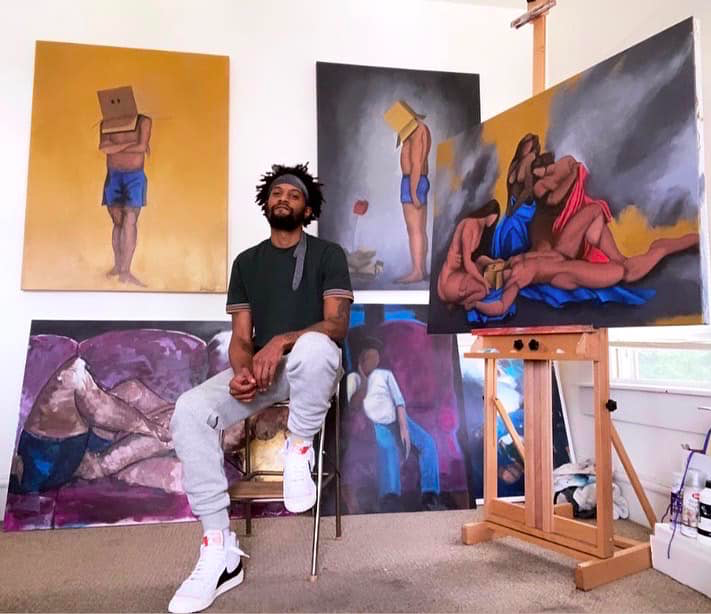
His paternal grandad was a renowned photographer, and there were cousins who worked in film and illustration.
During his adolescence in the west end of New Bedford, attending Keith Middle School and New Bedford High, his athletic prowess grew and his skill as a basketball player led to him being recruited by the University of Massachusetts, Dartmouth. But at some point, a back injury sidelined him and unable to continue to play ball, he found himself somewhat adrift.
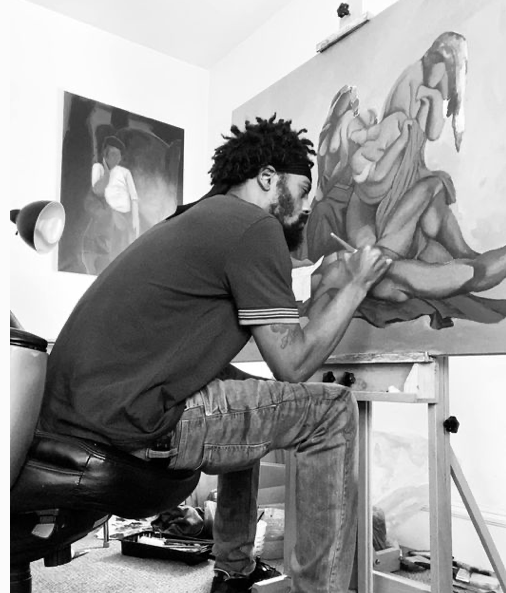
Art beckoned again. He gained proficiency without formal training, becoming the epitome of the self-taught artist. Networking, he soon began doing illustrations, logos, layouts and commissioned portraits. As his skill set grew, he collaborated with creators from the arenas of music and fashion, eventually working with fashion icon Kerby Jean-Raymond, founder of fashion label Pyer Moss.
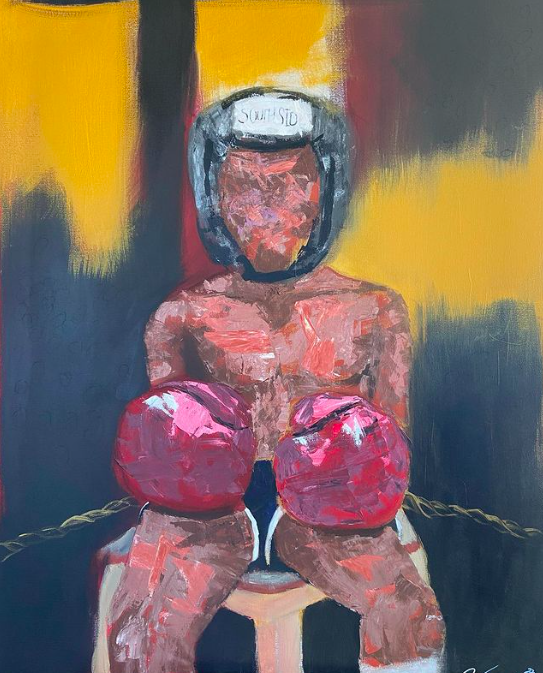
Kennedy is a talented draftsman, illustrator and graphic designer but he did not do his first painting until January of this year. Six months later, he is traveling to London, where he will be showing his paintings in an eight-person exhibition at The Brick Lane Gallery.
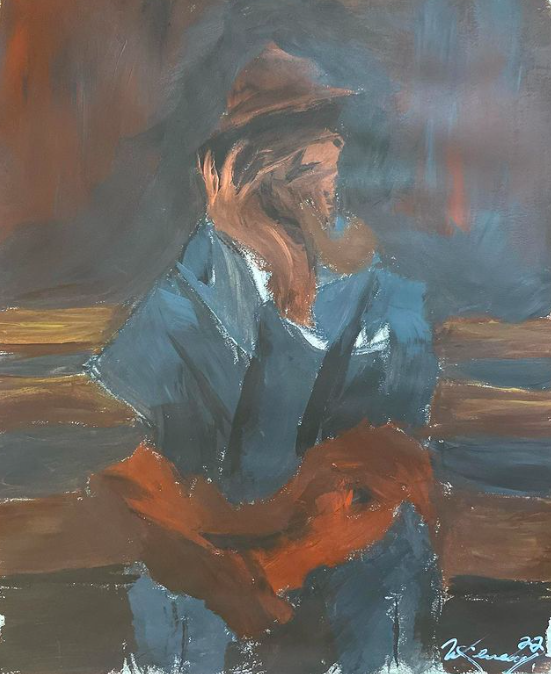
“Johnny,” a portrait inspired by his great-grandfather Johnny Williams, dapper with his fedora, bright blue suit and pipe was used as a poster for the London exhibition.
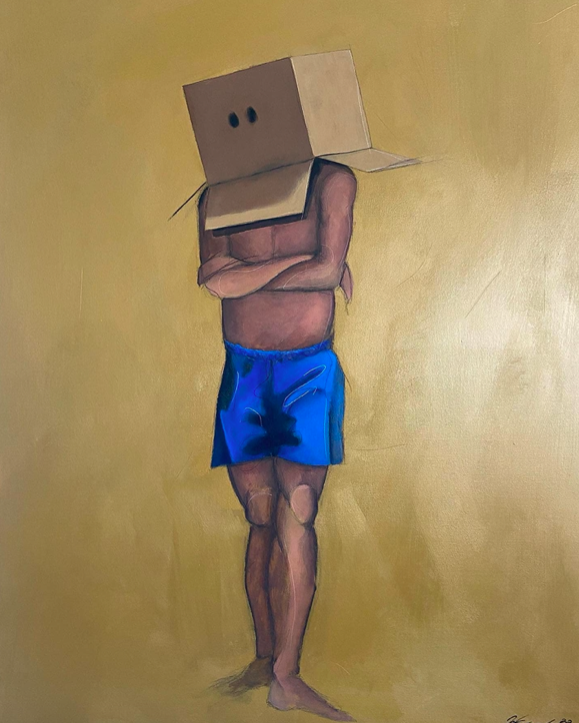
Before deep diving into Kennedy paintings, a brief look at his work in other media is a must. Certainly, he has great strength as a digital illustrator.
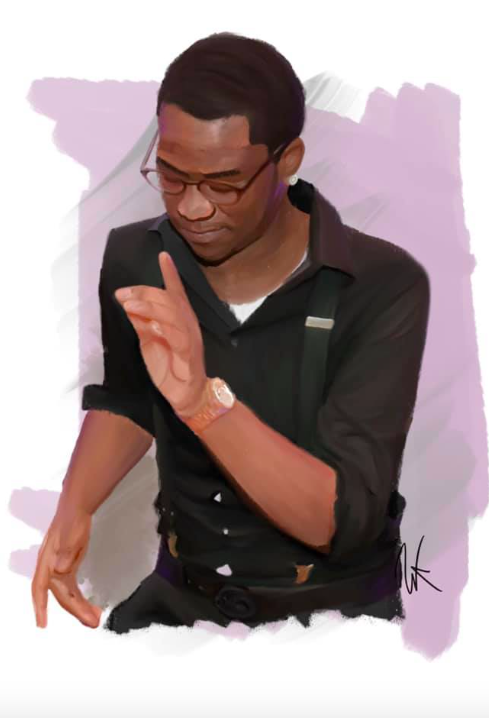
He had created a seemingly simple portrait called “Corey,” in which a smiling young man in a black shirt and matching suspenders happily sways against a pale lavender wash. When he posted the image on social media, he noted: “That boy loved to dance.”
Not long ago, he was asked to do a portrait of Malcolm Gracia, a young man who was shot in the back and killed by police over a decade ago at Temple Landing in New Bedford in a highly convoluted and controversial case. Kennedy’s illustration portrays the face of a handsome young man, framed in a square of blue. Below is the legend “Justice for Malcolm Gracia.”
The image was used on protest signs and Kennedy refused to take payment for his work, noting that he didn’t consider himself a social justice warrior but that he was not shy about speaking up when it was needed.
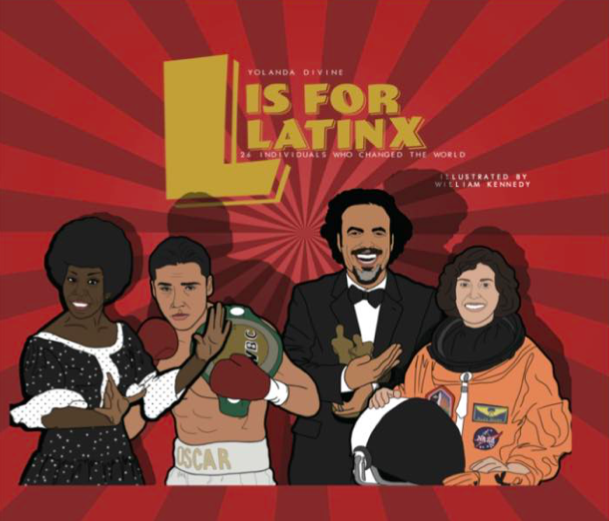
On a lighter subject, Kennedy has illustrated a children’s book titled “L is for Latinx,” in collaboration with writer Yolanda Divine.
Kennedy’s “The Grip of Obsession” is a wonderfully rendered charcoal drawing, focusing on the best known and most photographed element of a particular Bernini sculpture from 1622, “The Rape of Prosperina.” In it, the hands of Pluto, god of the underworld, grasp the hip and upper thigh of the young maiden he is abducting.
Bernini is so masterful that he makes marble look like flesh. Kennedy, working in a different medium and taking some creative liberties within his study, certainly does the old sculptor justice.
Sexuality plays a great part in “Comfort Zone,” a painting depicting a Black man in gym shorts and a naked woman reclining on a brilliant magenta couch, his head on one end, hers on the other. The full painting cannot be reproduced in the newspaper because of content.
The man uses his foot to massage the most intimate area of her body. As their faces remain unseen, it becomes universal: “any man and any woman, any couple.” Mentioning that aspect to Kennedy, he agreed but responded that although the couple was Black, the woman he painted was actually a white French-Canadian woman. The legs of the man were derived from a photograph of Muhammad Ali.
“Comfort Zone” works for any number of reasons, not the least of which is a strong sense of composition and an expressive, quietly frenzied application of paint. The comfort suggested in the painting almost has the musical sensibility of Prince or Leonard Cohen, two performers who often found a way to merge eroticism and spirituality in their songs.
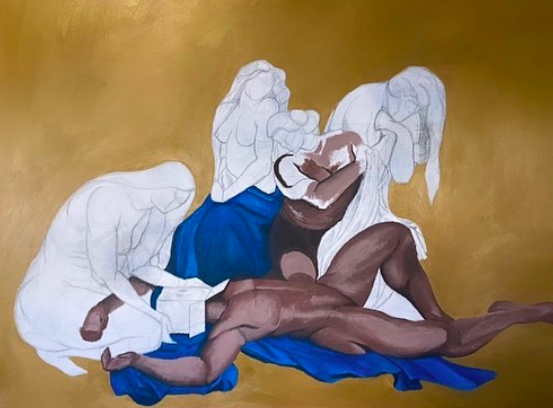
Kennedy’s “The Death of Adonis, Reinterpreted” is his version of Peter Paul Rubens’ 1614 masterpiece. The god Adonis was slain by a wild boar sent by the vengeful goddess Artemis. He lays on the ground, mourned by four mythical women: Venus, the goddess of love, and the Three Graces, Euphrosyne, Aglaia and Thalia. Nearby are a weeping Cupid and two indifferent hounds.
In Kennedy’s reinterpretation, Cupid, the dogs and the background are edited out. And more significantly, all the key players - the dead Adonis and the weeping women- are now Black.
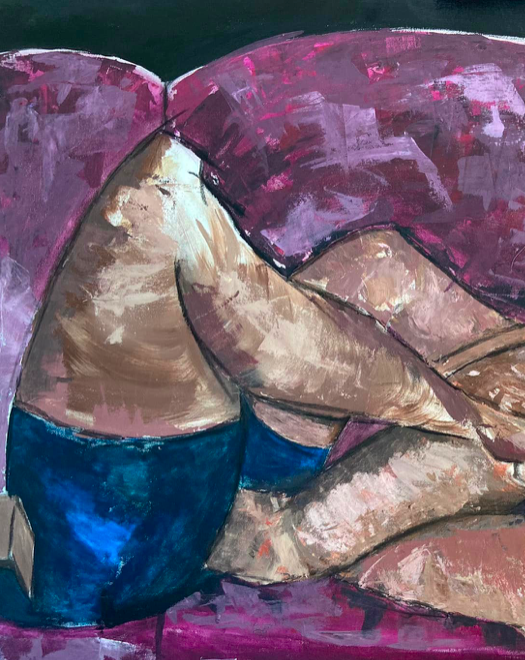
The mourners are the mother and aunts of the dead young man. The young man was Corey, the boy who loved to dance. He was Kennedy’s cousin, killed in a drive-by shooting in DC.
Kennedy has done a series of paintings (three so far) called “The Box They Tried to Put Me In.” In each, a Black man’s head is covered with a corrugated cardboard box. It is his response to white expectations of what a young Black man is expected to be: basketball player, rapper, thug, the usual narrow-minded choices.
Believe me, no one is putting Kennedy in a box.
This article originally appeared on The Herald News: Art Beat features Fall River artist William Kennedy

